Protoplanetary discs and embedded planets
Collaborators - Kenny Wood (St Andrews), Phil Armitage (JILA/University of
Colorado),
Barbara Whitney (SSI Colorado), Jon Bjorkman (University of Toledo).
A sufficiently massive planet embedded within a circumstellar disc will transfer
angular momentum to the disc material producing a gap. If there is enough time then
the gap may be cleared all the way to the inner edge of the disc. Such disc gaps may
manifest themselves as deficiencies in the spectral energy distributions (SEDs) of
protoplanetary accretion discs. Photons from the central star (and in some
cases viscous accretion luminosity) are reprocessed as they pass through the
cooler accretion disc producing an excess emission at infra-red wavelengths.
If material is missing, as in the case of a gap cleared by an embedded planet,
the flux at certain wavelengths will be lower than if the material were present.
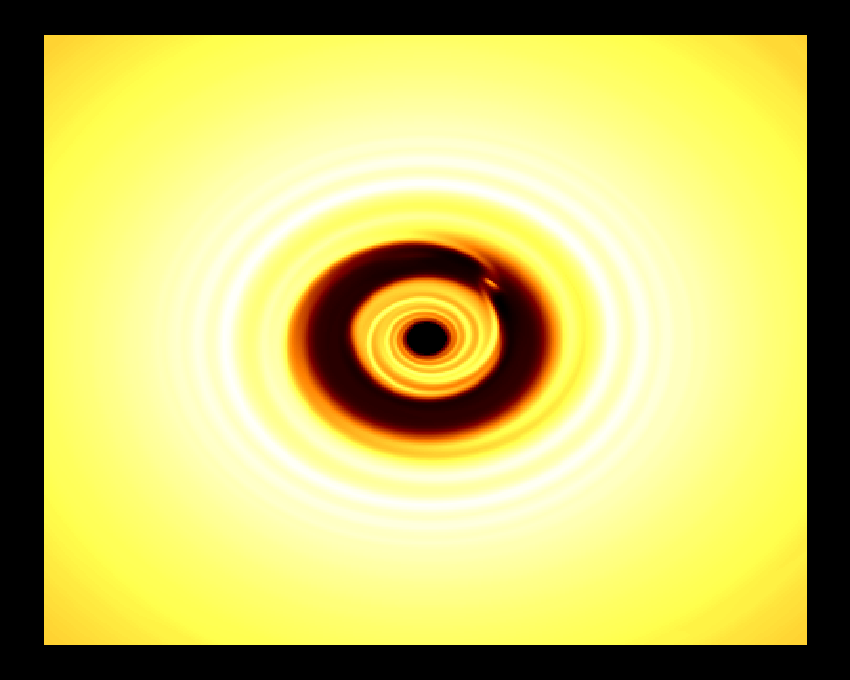
ZEUS simulation of a 2 Jupiter mass
planet clearling a gap in a protoplanetary
accretion disc.
|
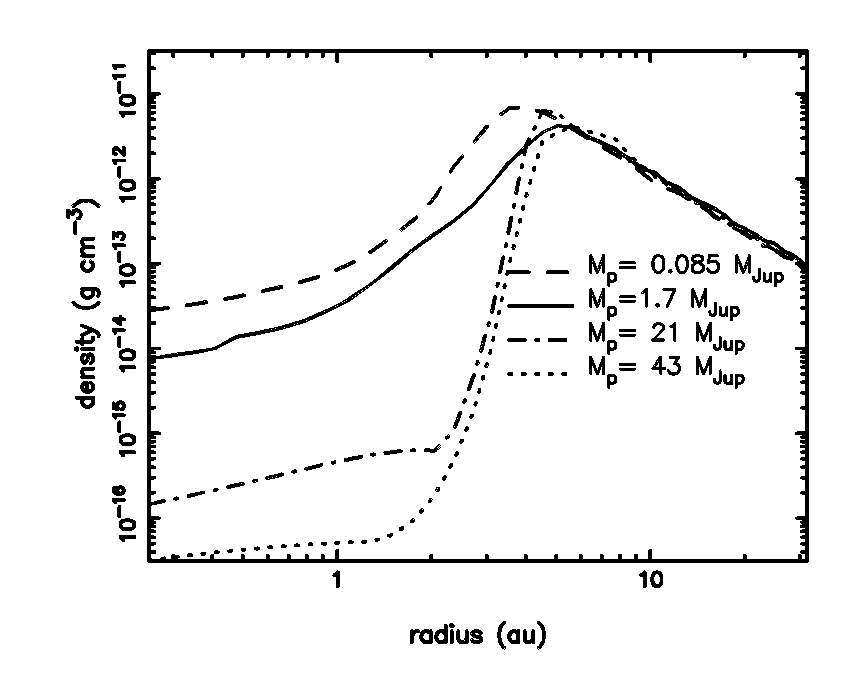
Midplane disc density of a protoplanetary disc cleared
by embedded planets with masses of 0.085, 1.7, 21,
and 43 Jupiter masses.
|
The SED of the classical T Tauri star GM Aurigae shows a deficiency in the near
infra-red excess suggesting the presence of a gap in the disc extending out to
approximately 4 au. We use smoothed particle hydrodynamics (SPH) to simulate an
protoplanetary accretion with parameters appropriate for GM Aurigae to
see if density profile resulting from the presence of an embedded planet can
produce an SED (computed using a Monte Carlo radiation transfer code developed
by Kenny Wood) that matches that observed for GM Aurigae. We consider planets of
various masses and find that there is the possibility of the SED constraining the
planet mass.
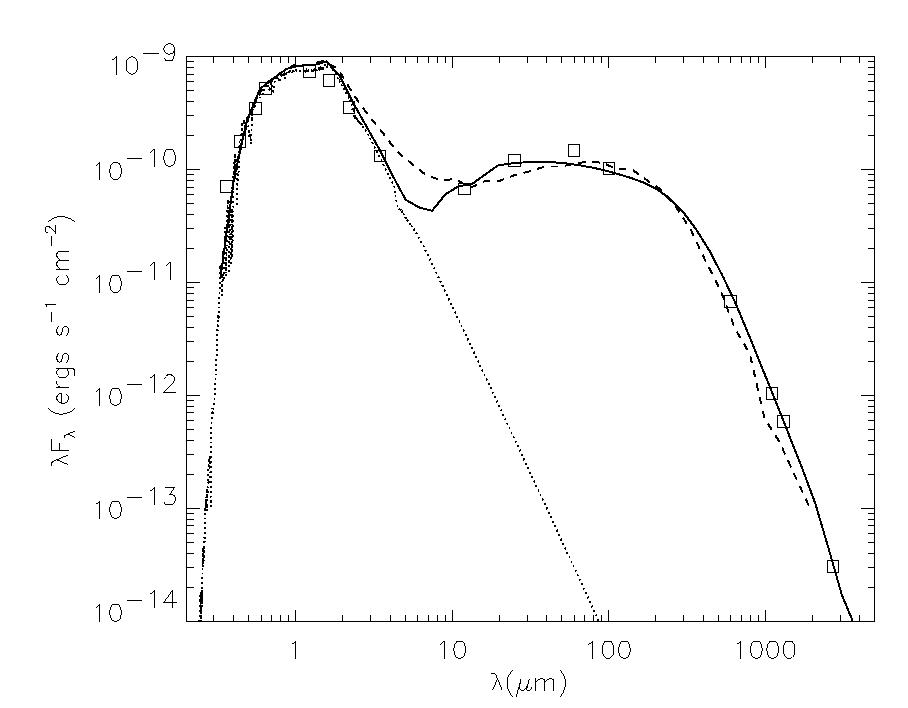
GM Aurigae's SED computed using the azimuthally
averaged density profile due to a 1.7 Jupiter mass
planet orbiting at 2.5 au (solid line). The dotted
line is the input stellar spectrum, the open squares
are data points, and the dashed line is an SED
computed assuming an equivalent disc in the absences
of a gap (click figure for a better quality version).
|
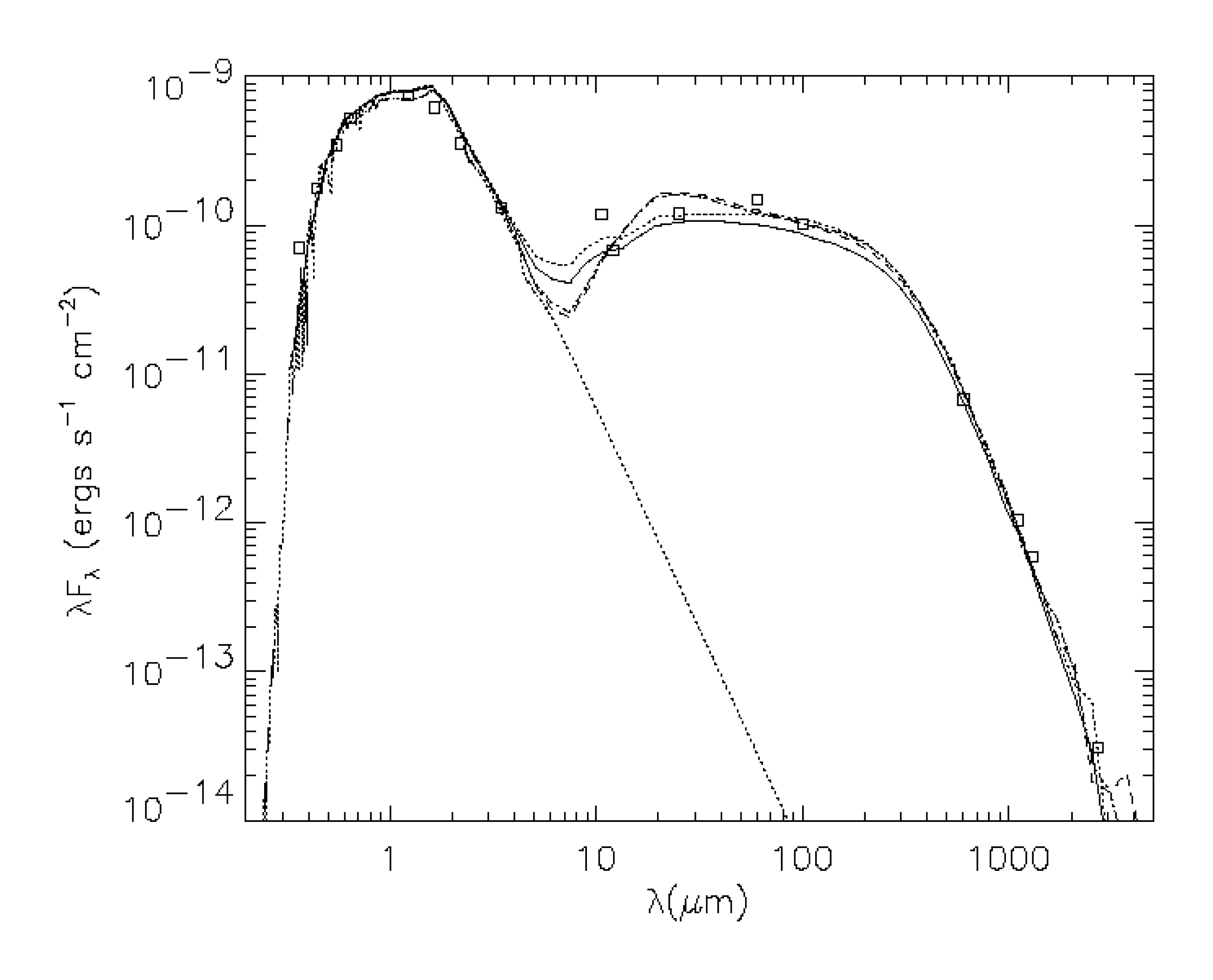
GM Aur's SED computed using density profiles due
to embedded planets of various masses. Although all
the computed SEDs fits most data points well there
is a suggestion that the planet mass must be such as
to produce a gap that still contains a reasonable
amount of mass. (click figure for a better quality version).
|
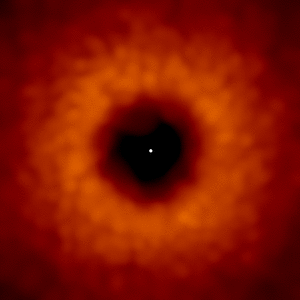 Movie of a 1.7 Jupiter mass planet orbiting at 2.5 au in a disc appropriate
Movie of a 1.7 Jupiter mass planet orbiting at 2.5 au in a disc appropriate
for GM Aurigae, opening, clearing and maintaing a gap that produces an SED
that fits the observed SED.
Constraints on a planetary origin for the gap in the protoplanetary disc of GM Aurigae, W.K.M. Rice, K. Wood, P.J. Armitage, B.A. Whitney & J.E. Bjorkmann, MNRAS, 342, 79 (2003)
|